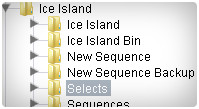GIS Applications in Forestry Management
GIS is your first choice in the management of natural resources. Currently,
the Forestry Bureau, local forest district offices, and other related departments
have adopted this system and devoted a great amount of resources in digitizing map data and
managing natural resources. Through
In real life, forestry involves complicated issues. Managers and decision makers must analyze numerous patterns of data to select the correct application. Their jobs involves factors such as forest usage, vegetation distribution characteristics, geographic conditions, and the existence of privately-owned and illegally-owned lands. It is difficult to unify different forms of forestry usage on one platform efficiently.With rapid economic development comes a necessity to manage the balance between the development of and protection of forestry resources. Through GIS software, paper, diagrams, and sheets are converted to digital format in order to effectively combine them for future use. Furthermore, decisions can be made in a prompt and accurate fashion without delay.
In short, GIS software increases work efficiency, reduces expenditures, and applies science more effectively to forestry management. GIS applications for forestry management covers the following fields:
The spatial model based on GIS permits managers to protect stand information and satisfy market needs. Using 3D GIS, you can observe a massive amount of data in 3D from multiple observation points. In addition, you can look up a surface, place grids and vector data on top of a virtual space, and create transparent images.With this system, lumbermen can make a better plans, be more efficient, and retrieve more lumber.
Applicable fields include: lumbering, optimal efficiency planning, and contract management.
GIS offers methods to track all objects for forestry laws and stand schedules.In the field of forestry, mobile GIS provides accurate material control and management.Applications include: forest restoration planning, stand forest restoration, low thinning, and silvicultural system.
Handling analysis and road maintenance are critical for forestry management expenditures. GIS facilitates the effective planning and management of outgoing road networks for forestry managers and provides adequate maintenance schedules.The GIS road network analysis module helps solve many different kinds of issues such as searching for efficient paths, direction guides during events, and looking for nearby facilities.You can stay to up to date on the latest road status through the system in a disaster event such as a fire or flood. This keeps you alert and up to date at anytime.GIS can be applied to the following fields: road maintenance, road network design, and road management.GIS users can perform the following tasks for ingoing and outgoing forestry management:
- Status analysis for landforms, surfaces, and slopes
- Calculations for excavation and filling
- Visibility analysis
- Calculations for classification or grading
- Research on public corridors
- Evaluation of environmental influences
- Integration of measurement data
- Analysis of expenditures and flows
Forestry project implementation requires the prediction and analysis of many different influential conditions. This process is especially important for the analysis of long-term forest yields and the census gathering of wild animals and plants.GIS is able to predict these conditions.This system combines geographic and spatial data in forests with detailed characteristics like size, species composition, vertical structure, and volume. By integrating prediction models with GIS data, forest managers can integrate temporal and spatial information as part of their planning. These models have the potential to produce 5, 10, 20, and even 100 years of prediction results and reference project diagrams.
In addition, GIS models can simulate different kinds of natural interferences and landform models based upon forestation demands.Also, analogy and prediction models can be established according to the area and distribution of forests, with a focus on unexploited areas. These models can be used for future simulation and analysis.
Simply put, ecological system management interconnects areas, local ecology, and socioeconomic factors to perform natural resource management and analysis.Through assessing various factors, establishing analysis models, and making comprehensive reviews, GIS makes this type of management a reality.GIS helps managers devise short-term and long-term plans using various natural resources and correlation studies.
GIS techniques also offer many necessary descriptions, analysis tools, and system models to simulate ecological processes. Features such as overlay analysis and biodiversity analysis can also be achieved.
Using GIS, overlay analysis can be conducted with demographical, ecological, and other kinds of data. This system is also able to complete numerous kinds of analysis that are hard to perform with other methods. The results of these analyses help regulate damage to ecological systems, maintain environmental sustainability, and control human activities. Thus, a balance can be obtained for a harmonious relationship between humans and the environment.
GIS techniques help forestry managers and firefighters manage forest resources more effectively. Through GIS, models and maps can be established to analyze fire distribution and intensity. This data helps firefighters on the ground better organize, manage, and establish a smoke propagation model. Most importantly, GIS is also beneficial for fire risk prediction, and can inform residents to adopt good precautionary measures.Low and high risk areas can be identified based on numerous source data including demographics, population, building models, and meteorological models.
In recent years, an increasing number of people are inclined to live in suburban areas adjacent to natural resources. Therefore, fire hazard prevention at the boundary between city and country is an important challenge to resource managers.Many city and county governments have chosen GIS to perform immigration planning, predict potential fire hazard at boundaries between cities and countries, and identify high-risk regions.Also, various types of maps and educational graphs can be utilized to educate people in high-risk regions of potential risks.
GIS produces results for hydrological characteristic calculations, discharge statistics, debris flow potential, and elevation data – all useful to calculate the size of water divides.Also, this system provides a compact selection of algorithms for the standardization of various data sources like land cover, soil properties, observation station location standardization, and climate change. GIS can provide flexible integration for hydrological data retrieved from streams and river networks.
Hydrological analysis of GIS spatial analysis model is able to calculate hydrological conditions with high elevation. Furthermore, this function constructs the basis of river basin network and hydrological information and can assign classes to different river lengths.Mobile GIS technology perfectly integrates geographical and temporal data sources. Every type of information you need can be easily collected. The geographical database created by GIS allows multiple users to create, edit, and manage grid data directories.
GIS solutions can also effectively manage urban forest resources. It can create detailed classification directories for tree health and diversity, and check and analyze the total amount, types, and necessary conditions for tree health. Only by understanding this information can we green our cities more effectively.The adoption of GIS techniques assists urban forestry management departments in performing real-time tree information input, update, and maintenance as well as locating potential hazardous regions and analyzing trends such as insect blights.GIS data layers such as streets, administrative boundaries, and rivers can be combined with forest and greening process data. Future greening planning can be implemented based on the data, and improve public involvement and outreach.





